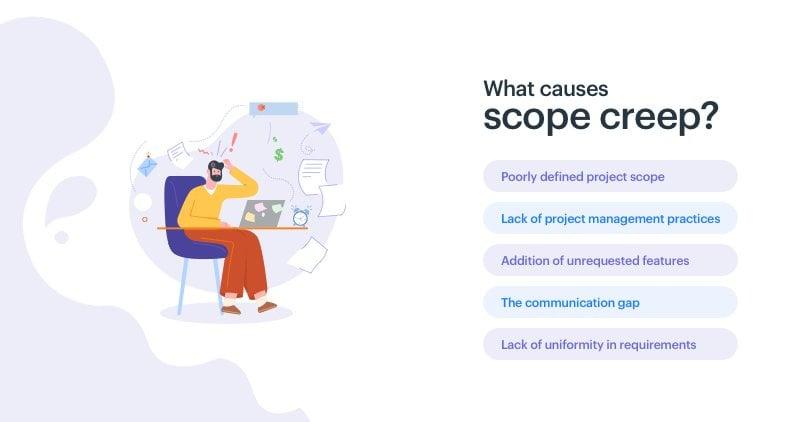In the dynamic landscape of project management, staying on course while navigating the complexities of stakeholder expectations is paramount. One of the most insidious challenges that project managers face is scope creep—the gradual expansion of project scope without corresponding adjustments in time, resources, or budget. Left unchecked, scope creep can derail even the most meticulously planned projects, resulting in missed deadlines, increased costs, and diminished team morale. To ensure successful project delivery, it is essential for leaders to adopt effective strategies that not only identify and mitigate the risks associated with scope creep but also foster clarity and alignment among all stakeholders. In this article, we will explore proven techniques to manage scope creep proactively, empowering project managers to maintain control and achieve desired outcomes while navigating the complexities of modern project environments.
Table of Contents
- Understanding Scope Creep and Its Impact on Project Success
- Establishing Clear Project Objectives and Requirements
- Implementing Robust Change Control Processes
- Engaging Stakeholders for Effective Communication and Collaboration
- Final Thoughts
Understanding Scope Creep and Its Impact on Project Success
Scope creep is an insidious phenomenon that can derail even the most meticulously planned projects. It occurs when new requirements, features, or tasks are added without proper control, often without corresponding adjustments to timelines or resources. This can lead to a significant increase in workload, team frustration, and ultimately, project failure. By recognizing the signs of scope creep, project managers can better defend against its effects. Key indicators include:
- Frequent changes to project requirements
- Increased requests from stakeholders
- Project timelines slipping due to added tasks
- Team members expressing confusion over priorities
To mitigate the risks associated with scope creep, implementing effective strategies is crucial. Establishing a clear project scope from the outset, including detailed documentation and agreement from all stakeholders, lays a solid foundation. Regularly reviewing project progress and holding checkpoints can ensure that any new requests are critically assessed against the project’s overall objectives. Additionally, maintaining open lines of communication among all team members is vital. Consider employing a change management process that includes:
| Change Request Process | Responsibility |
|---|---|
| Submit request | Stakeholder |
| Review request | Project Manager |
| Assess impact | Project Team |
| Approve/Reject changes | Steering Committee |
Establishing Clear Project Objectives and Requirements
To effectively manage project scope, it is essential to begin with a concise understanding of the project’s objectives and requirements. Establishing these parameters not only aligns the team but also minimizes ambiguity that can lead to scope creep. Here are some key components to consider:
- Define Specific Goals: Clearly articulate what the project is intended to achieve.
- Identify Stakeholder Needs: Gather input from all stakeholders to ensure their expectations are addressed.
- Set Measurable Outcomes: Determine how success will be evaluated to keep the project on track.
In addition to setting clear objectives, documenting these requirements in a formal agreement can provide a reference point throughout the project’s lifecycle. This ensures all team members are aligned with the agreed-upon scope and can help facilitate discussions when potential changes arise. To support effective communication, consider utilizing a table format to organize and present key project elements, such as:
| Project Element | Description |
|---|---|
| Scope Statement | A detailed description of the project deliverables and boundaries. |
| Assumptions | List of factors considered true for the project planning. |
| Constraints | Limitations that the project must operate within, such as budget and time. |
Implementing Robust Change Control Processes
Establishing a strong change control process is critical to maintaining project integrity and ensuring that any alterations to the project scope are managed in a structured way. To accomplish this, organizations should implement a formalized procedure that includes clear guidelines for proposing changes. This procedure should have the following components:
- Change Request Submission: Stakeholders must document the proposed change, detailing its purpose and potential impact on the project.
- Impact Assessment: An evaluation committee should assess the proposed change to determine its effects on timelines, budgets, and resources.
- Approval Process: A predefined hierarchy for approval needs to be established to ensure that only necessary changes are sanctioned.
- Communication Plan: Changes must be communicated effectively to all team members and stakeholders to ensure transparency and alignment.
Furthermore, it is essential to track and document all approved changes to foster accountability and streamline project execution. Maintaining a Change Log can aid in monitoring the evolution of the project scope and provide insights for future projects. Here’s a simple structure for a table that can be used to log changes:
| Date | Change Description | Impact | Status |
|---|---|---|---|
| 2023-10-01 | Added new feature X | Increased project timeline by 2 weeks | Approved |
| 2023-10-15 | Modified the design of feature Y | No impact on budget | Approved |
Engaging Stakeholders for Effective Communication and Collaboration
Effective communication and collaboration among stakeholders are essential to successfully managing projects and mitigating scope creep. Engaging stakeholders from the outset fosters a shared understanding of project objectives, constraints, and expectations. To ensure a smooth dialogue and maintain momentum, consider the following strategies:
- Regular Check-ins: Schedule consistent meetings or updates to keep stakeholders informed about progress, challenges, and any changes in scope.
- Transparent Documentation: Maintain accessible records of project plans, decisions made, and scope changes, enabling stakeholders to stay aligned.
- Feedback Loops: Create mechanisms for stakeholders to share their input and concerns regularly, enhancing collaboration and addressing issues swiftly.
Additionally, utilizing visual aids can greatly enhance understanding and buy-in from stakeholders. Using project timelines or scope matrices can clarify the interdependencies and boundaries of a project, helping to prevent misunderstandings. Below is a simple example of an engagement matrix:
| Stakeholder | Engagement Level | Preferred Communication Method |
|---|---|---|
| Project Manager | High | Email/Meetings |
| Business Sponsor | Medium | Reports |
| Team Members | High | Chat/Updates |
| Clients | Low | Emails/Surveys |
By aligning communication approaches and establishing clear expectations, project managers can foster a collaborative environment that minimizes scope creep and keeps the project on track.
Final Thoughts
managing scope creep is essential for the successful delivery of any project. By implementing effective strategies such as establishing a clear project scope, maintaining open lines of communication with stakeholders, and employing rigorous change management processes, project managers can mitigate the risks associated with uncontrolled alterations to project parameters. It is imperative to foster a culture of accountability and transparency within project teams to ensure that all members understand the implications of scope changes. Ultimately, proactive management of scope creep not only enhances project outcomes but also builds trust with stakeholders, ensuring that projects are delivered on time and within budget. As we move forward in an increasingly dynamic business environment, adopting these strategies will empower organizations to navigate challenges confidently and achieve their project objectives.






